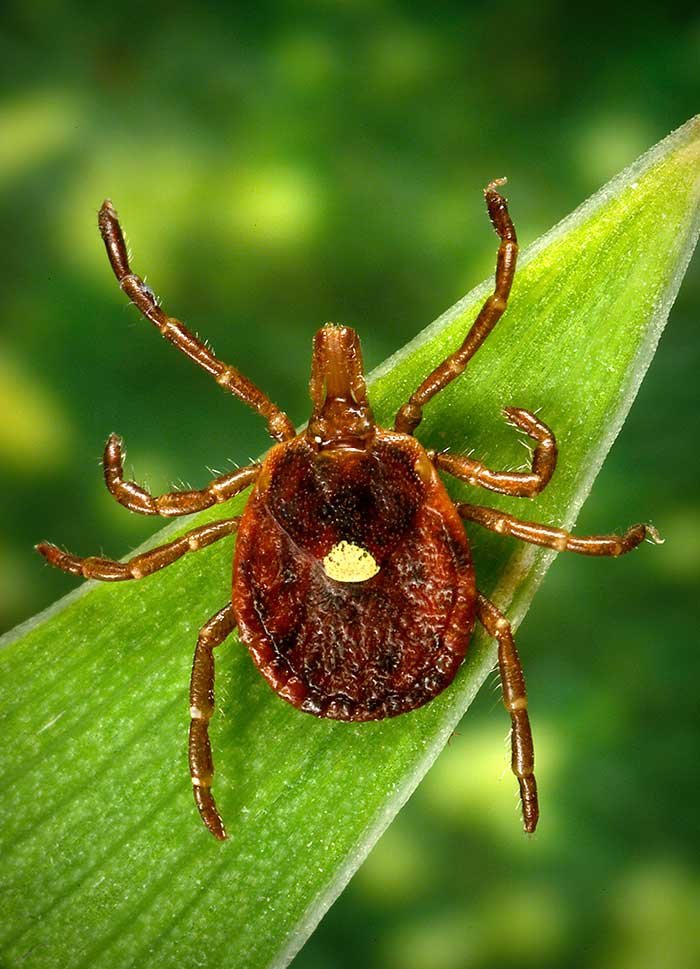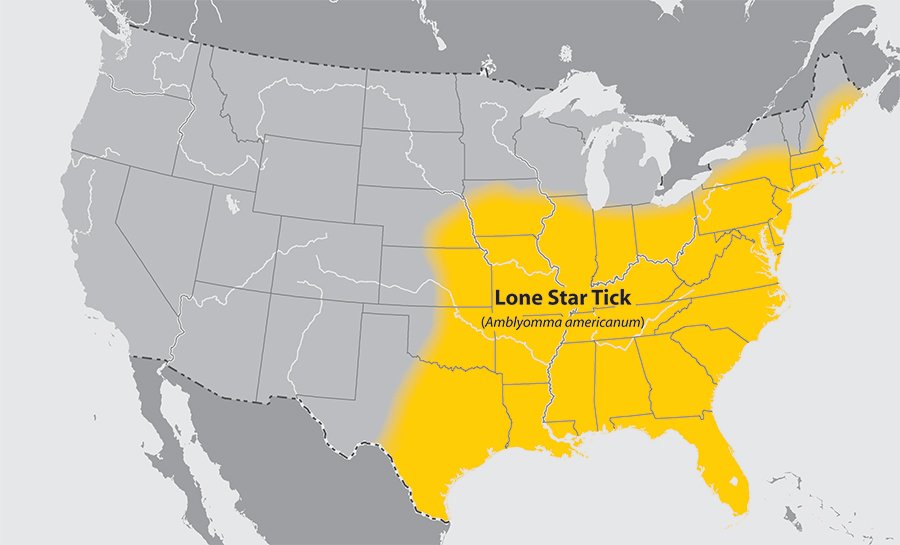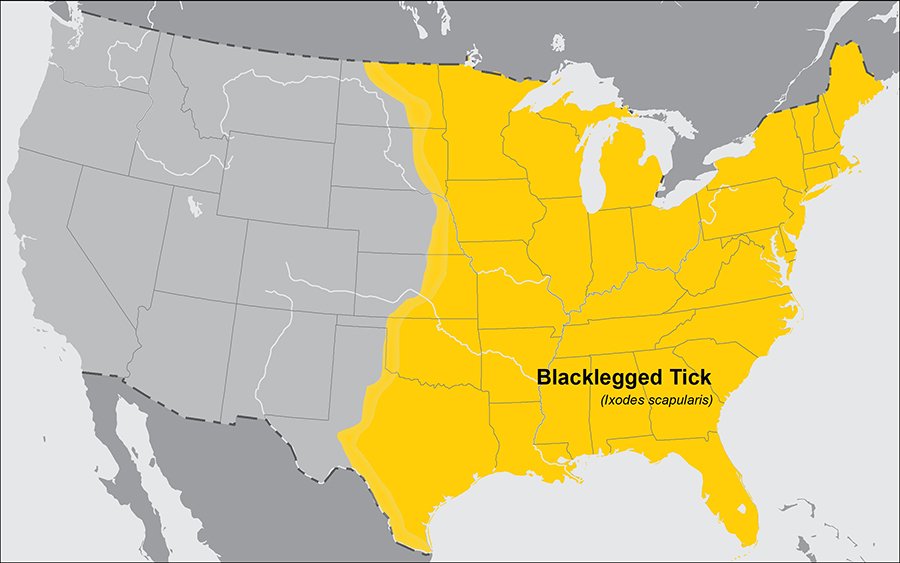10 Cool Things I Learned From Tick Academy
A few weeks ago I had the opportunity to listen in on the annual Tick Academy, a webinar that brings together a diverse group of professionals and enthusiasts working collectively to address the growing threat of ticks and tick-borne diseases in our communities. Featured speakers included:
Alexis (Lexi) White, Vector-borne Disease Eco-epidemiology & Control Lab, University of Rhode Island
Bob Maurais, Mainely Ticks
Jean Tsao, Michigan State University
Erik Foster, Centers for Disease Control and Prevention
Erika Machtinger, Pennsylvania State University
Kirby Stafford, The Connecticut Agricultural Experiment Station
Brian Allan, University of Illinois Urbana-Champaign
Scott Larson, Metropolitan Mosquito Control District
Susan Paskewitz, University of Wisconsin-Madison Department of Entomology
Tammi Johnson, Texas A&M University
Kerry Clark, University of North Florida
Here’s what I learned:
Tick-Borne Diseases: A Growing Concern
Lyme disease is the most commonly reported vector-borne disease in the United States.
Tick-borne diseases are on the rise, with Lyme disease accounting for 63% of all vector-borne diseases. Lyme disease is caused by bacteria transmitted by the deer tick (Ixodes scapularis).
Historically, tick control measures have focused on individual property owners, mainly through chemical sprays and similar methods
A deer tick (Ixodes scapularis), the primary vector of Lyme disease.
Image source: CDC
2. Lone Star Ticks: A Growing Concern
Lone Star ticks (Amblyomma americanum), known for their aggressive human biting behavior, carry various bacteria and have potentially become a carrier of the Heartland virus.
All life stages of this tick are active during the summer months, and they primarily feed on deer.
Surprisingly, they can move up to a meter to reach a host and stay on hosts for several days.
The Lone Star tick (Amblyomma americanum) has been associated with causing a meat allergy in humans. When this tick bites someone, it can transmit a sugar molecule called alpha-gal into the person's bloodstream. Subsequent exposure to red meat, such as beef, pork, or lamb, can trigger an allergic reaction in individuals who have developed sensitivity to alpha-gal. This allergic reaction to red meat after a Lone Star tick (Amblyomma americanum) bite is known as alpha-gal syndrome or alpha-gal allergy.
A Lone Star tick (Amblyomma americanum), the primary agent of alpha-gal syndrome.
Image source: CDC
3. Guinea Fowl: Nature's Tick Warriors
Guinea Fowl, which consumes ticks, have garnered attention as a natural tick prevention and control solution. Guinea fowl can help lower the risk of Lyme disease for caretakers by consuming deer ticks (Ixodes scapularis), known carriers of the disease-causing bacteria, and reducing the tick population in an area.
Could Guinea Fowl be the heroes in our battle against ticks? Further research is needed to uncover their full potential.
4. Maine: Battling Lyme Disease
Maine boasts the highest incidence of Lyme disease in the U.S.
In 2022, the state recorded its highest-ever documented cases, with the senior population being the most affected. In 2021, (preliminary data as of April 19, 2022) providers reported 1,508 confirmed and probable cases of Lyme disease among Maine residents (via Maine State Legislator Lyme & Other Tick-Borne Illnesses report).
Anaplasa, another type of bacteria spread by deer ticks, also threatens Maine. The Maine Department of Health & Human Services stated that as of April 19, 2022, initial data indicated a surge in anaplasmosis cases in Maine, reaching a record high of 841 confirmed and probable cases in 2021, marking a substantial 90% increase from the 442 cases reported in 2020. Cases were documented in all Maine counties except Piscataquis.
5. Effectiveness of Public Health Education
Public health education faces limitations in scaling tick-borne disease risk reduction. The complex nature of individual behavior change contributes to the challenges in scaling up public health education efforts for effective risk reduction.
Currently, no vaccine is available for Lyme disease, although one is on the horizon.
Changing behaviors through education is a complex task, with mixed results at the individual level.
Community-level efforts are more effective.
6. Integrated Tick Management: A Holistic Approach
Integrated tick management combines tick surveillance, collections, education, and personal protection measures to reduce the risk of tick-borne disease transmission in a community.
The Midwest and Northeastern regions are of particular concern because of the presence of Lone Star Ticks (Amblyomma americanum) and Deer Ticks (Ixodes scapularis), with tick activity peaking between Memorial Day and July 4th.
The distribution of lone star ticks (Amblyomma americanum) throughout the US.
Image source: CDC
The distribution of Blacklegged or Deer Ticks (Ixodes scapularis) throughout the US.
7. Utilizing Established Networks for Education
Leveraging established networks and behavioral change models is crucial in educating communities.
University extension services offer non-formal education in various fields, making them potential platforms for disseminating tick-borne disease information.
The equation "Behavior equals Motivation multiplied by Ability multiplied by Prompt" encapsulates the factors influencing human behavior.
8. Southeastern USA's Common Human Biting Ticks
The most commonly encountered ticks in the southeastern U.S. are the American dog tick (Dermacentor variabilis), lone star tick (Amblyomma americanum), black legged or “deer” tick (Ixodes scapularis) and brown dog tick (Rhipicephalus sanguineus).
Multiple prevalent tick species can carry diseases. Most tick-borne bacterial illnesses respond well to treatment when detected early. However, if not diagnosed in the initial infection stages, treatment can become challenging and lead to persistent symptoms.
Monitoring and communicating the risk of common human-biting tick species in the Southeast is essential for preventive action.
9. Tick Removal
If you find a tick attached to you, carefully remove the tick, preferably with tweezers, save the tick for possible testing, treat the tick bite site with topical antiseptic, seek evaluation if you experience any signs/symptoms suggestive of tick borne infection. For more information, please read the CDC Guidelines.
10. Free Resources
Individuals in the U.S. can send tick photos to experts for free identification. We recommend TickSpotters, a free program by the University of Rhode Island.
The insights gained from Tick Academy highlight the importance of collaborative efforts in tackling this persistent issue. For more information on Tick Academy, please contact Leah McSherry: [email protected]
Vectech works with public health organizations around the world to provide their communities with better information on vectors. Vectech’s technology uses AI to support tick monitoring programs that can warn public health professionals when they need to take action and inform the general public when there is a greater risk of encountering a tick. If your city, county, or state is looking for a better way to monitor ticks, please Contact Us.
Written By: Shaza Ibrahim
Reviewed By: Tristan Ford, Dr. Roy Faiman





